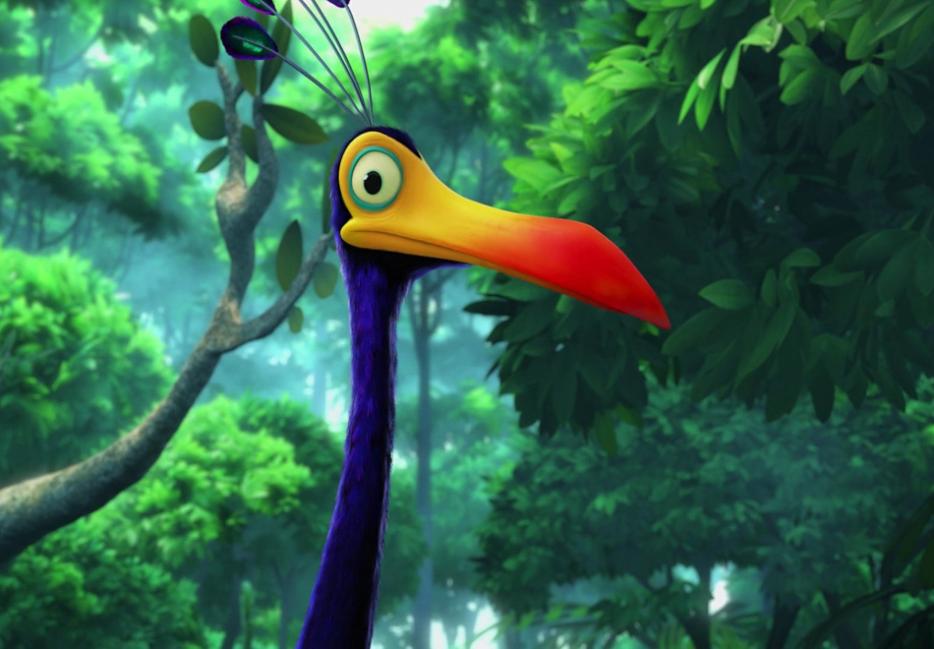Treatises on the creative process tend to lean heavily on central metaphors; Hemingway said prose was architecture, and Stephen King said it was paleontology. In his new book Creativity, Inc.: Overcoming the Unseen Forces that Stand in the Way of True Inspiration (written with Amy Wallace), Pixar co-founder Ed Catmull uses the “baby” metaphor. “Originality is fragile,” Catmull writes:
This is why I call early mock-ups of our films ‘ugly babies.’ They are not beautiful, miniature versions of the adults they will grow up to be. They are truly ugly: awkward and unformed, vulnerable and incomplete. They need nurturing—in the form of time and patience—in order to grow...Our job is to protect our babies from being judged too quickly. Our job is to protect the new.
The call to protect your babies runs counter to the advice that participants in creative writing classes usually hear—that you have to kill your babies. Variations on the phrase—murder your babies, kill your darlings—have been attributed to Hemingway, Aldous Huxley, Faulkner, and William Goldman (he wrote the screenplay for The Princess Bride). Last year, Daniel Radcliffe and Jennifer Jason Leigh starred in a film about the Beat Generation called Kill Your Darlings.
The idea of being merciless to your own creations actually comes from the 1916 guide On the Art of Writing by British writer Arthur Quiller-Couch. He wrote: “If you here require a practical rule of me, I will present you with this: ‘Whenever you feel an impulse to perpetrate a piece of exceptionally fine writing, obey it—whole-heartedly—and delete it before sending your manuscript to press. Murder your darlings.”
The phrase caught on; its Spartan quality makes it feel like good advice, like sleeping on a hard bed or restricting your diet to bread and water. But we may have lost some of its original meaning. Quiller-Couch is not arguing for a cavalier attitude towards lines, scenes, or ideas that their creators love. He is arguing against a perception of “fineness” which characterizes “fine writing” as that which exists at a remove from the writer. Your darlings don’t share your DNA; they are dolls dressed up to match a romanticized idea of what a beautiful child looks like. Since they aren’t truly alive, they can’t grow or change—they can only be eliminated.
Pixar’s movies take years to make, and some go through so many changes we can barely see the baby in the adult it has become. One of Pixar’s most lauded movies, Up, features an old man, Carl Frederickson, who fulfills a promise to his dead wife by tying a gigantic fleet of impeccably animated balloons to his house and taking off for South America (along with a stowaway eight-year-old Cub scout named Russell). Along the way, they get caught in a thunderstorm, meet a tall multicoloured bird named Kevin, get in a brawl with Frederickson’s childhood hero, find a magic scrapbook from Frederickson’s dead wife’s childhood, and help a talking dog defeat his evil canine master. The similarities between the final version of this film and the first draft? The title and the tall bird.
“Part of our job,” Catmull writes, “is to protect the new from people who don’t understand that in order for greatness to emerge, there must be phases of not-so-greatness.” For Pixar, those people sit in offices a few floors up: they are marketing, finance, and publicity department representatives who want a movie that will work. For many of us, those pressures are internal—it feels futile to keep trying with an idea that doesn’t seem to be panning out.
“Part of our job,” Catmull writes, “is to protect the new from people who don’t understand that in order for greatness to emerge, there must be phases of not-so-greatness.”
The baby metaphor for the creative process, like all metaphors, has its limitations, as well as its ambiguities. For Catmull, it’s the newness of an idea that makes it resemble a baby, whereas in the usual “kill your babies” formulation it’s the creator’s attachment to an idea that makes the metaphor. But Catmull’s take on it—that new ideas have to be allowed an awkward phase, and need to be protected while they fumble towards maturity—has the benefit of encouraging experimentation. Cutting or abandoning a complex idea too early can mean resorting to conventional formulations, and if the advice is too deeply internalized it can mean never allowing oneself to take stylistic risks at all.
Of course, babies do have to grow up. Catmull isn’t trying to argue that no one should ever cut characters, lines, or ideas from a creative project if, once they’ve been allowed to develop, they still can’t stand up to criticism. Pixar films all have to make it past a committee called the Braintrust, which, Catmull writes, “we rely upon to push us towards excellence and to root out mediocrity.”
In Up’s original conception, the protagonists were a king and two spoiled princes living in a castle floating in the sky. The director, Pete Docter, was trying to get at a certain feeling: “I have lots of daydreams about getting marooned on a tropical island or walking alone across America. I think we can all relate to the idea of wanting to get away from everything.” The Braintrust liked the central idea, but the castle and the king and the princes didn’t seem to be the best way to express it. So Docter introduced the old man character, the balloon-powered house, and the boy scout. In this iteration, the house ends up on a leftover Soviet-era dirigible—a spy vessel—cunningly disguised as a cloud. This didn’t quite work either, so Docter and his team got rid of the cloud and introduced the character of Muntz, Frederickson’s childhood hero. With a brief detour through a storyline involving the tall bird’s magic eggs, which was eventually cut, Up achieved its final form.
At a certain stage, it’s not about killing or saving babies—it’s about outgrowing the parenting metaphor. “[E]ven the most experienced Braintrust,” Catmull writes, “can’t help people who don’t understand its philosophies, who refuse to hear criticism without getting defensive, or who don’t have the talent to digest feedback, reset, and start again.” As much as ideas are like children, they’re also nothing like children at all—you may actually be able to change them.






